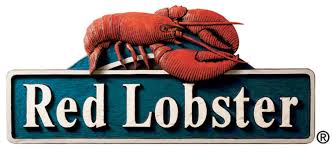
Overview:
-
Activists shouldn't have been surprised by the Red Lobster sale to private equity.Darden missed opportunities over time.
- Some Red Lobster levers for improvement exist.
To any close observer of the ongoing Darden (DRI) conflict as it has unfolded with its opponent activists Barington, and Starboard since late 2013, a Red Lobster sale to private equity was not a shocking outcome.
Consider:Private equity has dry powder--unallocated funds-- available that it must put to use to earn a fee. Golden Gate had owned three restaurant brands and continues to own one, California Pizza Kitchen.Darden, which was in trouble since at least 2007 trying to hit a 15% EPS model with the mature Red Lobster and Olive Garden restaurant brands, bought a lot of restaurant concepts at high price in 2008-2013, and wound up with a lot of debt. As the rate of casual dining traffic decline fell after the Great Recession, (Darden noted the casual dining overall space traffic fell 18% versus the peak) and core earnings fell, it had both dividends and buyback demands going up at the same time. A true cash flow squeeze resulted.Darden had remodeled the entire Red Lobster chain by 2013 and needed to get some money out of its investment. (Why it remodeled Red Lobster first versus Olive Garden is a fascinating question.)Red Lobster had underlying real estate that could be levered to lower the effective Golden Gate purchase price.The question, is what now to do with Red Lobster? What are the "Lobster Levers"?On the positive side, the brand ratings are not weak. It ranks roughly in the middle of the pack via the 2014 Brand Keys Customer Loyalty index but near the top of the 2013 Q4 Goldman Sachs Brand Equity Survey. The downside is there are no other national seafood players to steal market share from. Bonefish (Bloomin Brands) (BLMN) is just growing and Joe's (Ignite Restaurant Group) (IRG) has built its own crab niche.It's not going to work its way out of trouble with more $10 television advertising that it has been pounding way with this week. It's going to have rent to pay. Darden has noted Red Lobster's customer base indexes older and lower income than the most desirable casual dining peers; it's got 706 units in an overbuilt US restaurant space. Keeping the same units and doing the same thing won't solve anything.But what it can do is the following:Close some units. Now that it is private and protected from the intense investment community focus on every metric, it can examine its store base. Note that American Realty executed sale leasebacks on 500 of the 706 units. A number of units were excluded for a reason, some were leased, some undesirable to do so.Red Lobster reached its unit count peak in the US in 1996, at 729 units. It then closed 75 stores over the next four years, to arrive at 654 units in 2000, to then slowly grow again until 2013. The natural US unit cap seems to be much smaller than 700. A privately held company can work this.With a rather low 9% reported adjusted brand EBITDA, the law of large numbers is there must be a number of units that are in the lower profit quadrant that upon closure, could result in positive cannibalization, and will improve the overall brand average profile.Test and rebrand. Maybe because it was part of the central heritage of Darden, other than remodeling or wood grilling, there has been no real new concept ideation for years. A self serve Red Lobster lunch platform and Red Lobster/Olive Garden combo stores were tested recently and were a total waste of time and money. Such poor quality tests are indicated of a big concept ideation problem. Too much seafood on the menu and a very low level of alcohol sales are indicative of the problems.Work international. All of its peers are. Darden just began a brief foray into ex-Canada international and franchising in 2013. As late as 2013! Missing the international opportunity was a great strategic flaw. The US is filled up with restaurants. Can't Red Lobster work internationally, somewhere?Work franchising, joint and limited partnerships. Darden's problems with franchising went all the way back to a failed franchised venture in the 1970s. Franchising is difficult, well funded and capitalized franchisees have to be found. Darden said they didn't have the expertise. But it can be found. A new management mindset embracing franchising has to be developed. It can work in casual/fine dining: Ruth Chris (RUTH) has had 50% of its stores franchised to solid players forever, and Cheesecake Factory (CAKE) is working franchising and joint venture partnerships to get its international growth jump started. The Cheesecake founder, restaurant operator, David Overton "got it", but not Darden.Disclosure: I have no positions in any stocks mentioned, and no plans to initiate any positions within the next 72 hours. I wrote this article myself, and it expresses my own opinions. I am not receiving compensation for it. I have no business relationship with any company whose stock is mentioned in this article.1 Comment
Leave a comment
No TrackBacks
TrackBack URL: https://www.franchise-info.ca/cgi-bin/mt/mt-tb.cgi/3847


Looks like there has been a 180 on the menu change, John.
http://www.cbsnews.com/news/red-lobster-claws-back-lobster-dishes/